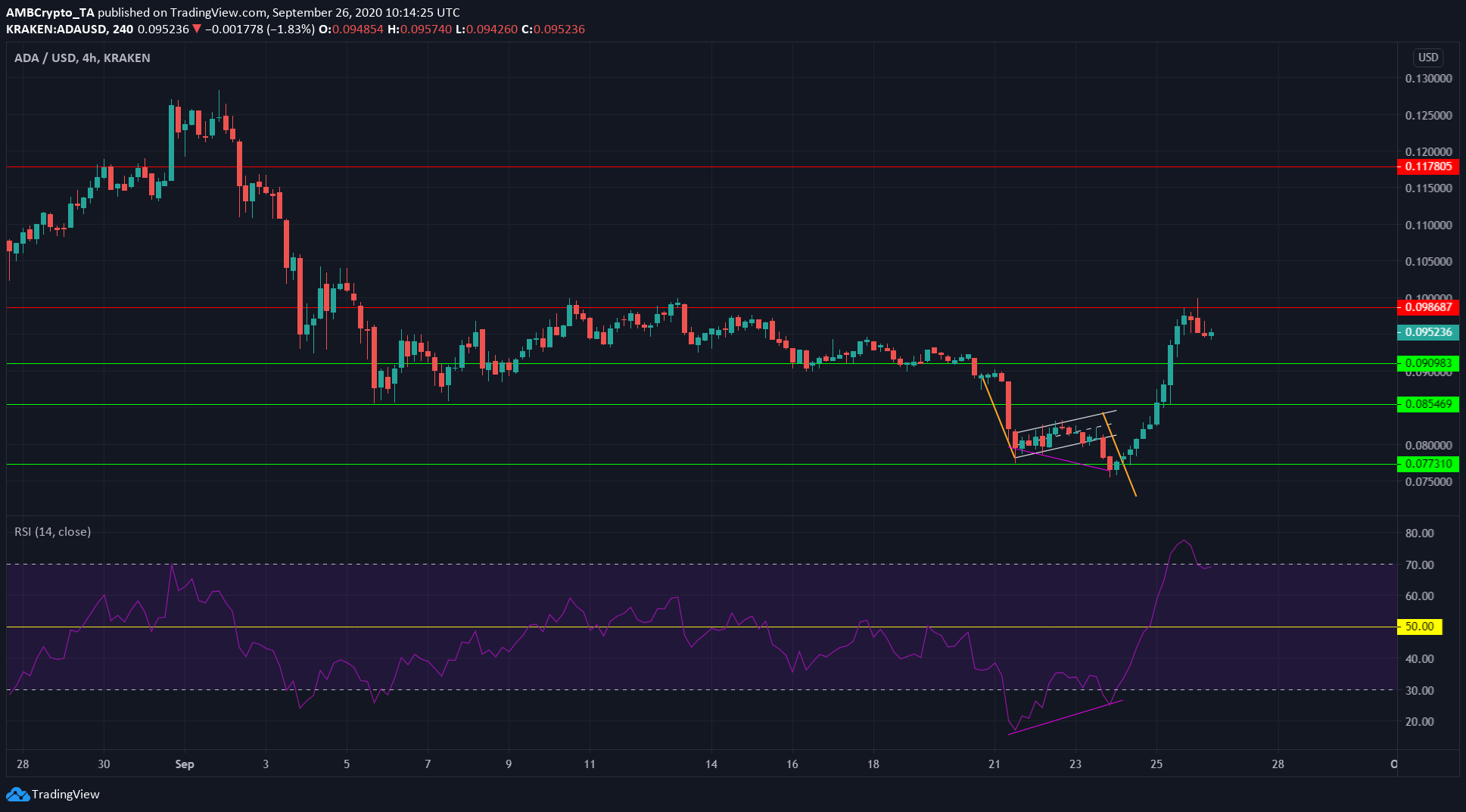Analysis
Cardano, Waves, Enjin Price Analysis: 26 September

Cardano registered a bearish pattern on the charts, one that validated the previous pattern to some extent, before the markets shifted dramatically to spur ADA upwards. Waves was in the oversold territory and might be forced to drop further in the coming hours. Enjin, however, appeared directionless in the market as buyers and sellers each negated the other’s effect on price movement.
Cardano [ADA]

Source: ADA/USD on TradingView
ADA broke out to the downside of a bearish flag pattern, one that projected ADA would drop to $0.073. However, ADA had support around the $0.077 region and also displayed a bullish divergence, highlighted in pink.
The RSI went into the oversold region as ADA reached a resistance level around the $0.1 zone. If the RSI stays above 50 in ADA’s coming pullback, and the support at $0.91 holds, it would be quite bullish for the crypto-asset.
Waves [WAVES]
Source: WAVES/USDT on TradingView
WAVES dipped beneath its support level at $2.31 and looked to be headed lower, but went into the oversold territory on the Stochastic RSI. WAVES mounted a weak fightback to rise above the $2.31 level twice, and at the time of writing, was trading at $2.50.
However, the Stochastic RSI showed consistently overbought conditions. If this plays out as expected, the latest hike in WAVES’ price will be just a bounce on a wider downtrend, which can be expected to resume in the next few trading sessions.
After $2.3, the next level of support for the crypto-asset lay at $2.
Enjin [ENJ]
Source: ENJ/USDT on TradingView
Enjin showed a lack of direction in the market. The Aroon indicator showed that neither an uptrend nor a downtrend was dominant, with one replacing the other every few days. At the time of writing, it was trading just above a level of support, and ENJ held a value of $0.156.
The trend appeared to be bullish as the Aroon Up (orange) crossed above the Aroon Down (blue). However, it remains to be seen if this would continue or if the price would be forced back down once more.
The Chaikin Money Flow also backed this conclusion as it was within the discretionary 0.05-neutral zone, indicating that buying and selling pressure were in balance.

